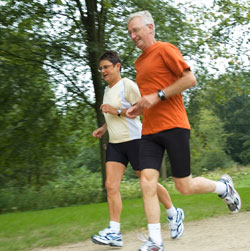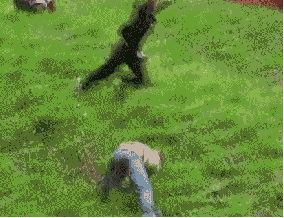If you speak to non runners about waking up early in the morning to run 4 or 5 miles around a park (or in my case the beach!), then you can expect some funny looks.
When you start to run regularly and push yourself the injuries are inevitable. Normally we just keep quiet about them and hope they go away, and normally they do. But it’s not uncommon for runners to push through injuries and make them worse! Either way, they say “prevention is better than cure” so here we go with our top tips to avoid running injuries:
1. Pace Yourself: Run within your limits
The first rule is simple, if you have spent the last 20 years struggling to pick remote control up, then you should not be leaping into a half marathon at the weekend.
Similarly, if you are an experienced runner, don’t suddenly think that you can shave 10 minutes off your 10K time by sprinting at the start line.
Nothing leads to injury faster than, as Maverick would put it: “Writing checks your body can’t cash”
There are some great programs for beginner runners like Couch to 5K. These programs steadily and gradually take you off the couch, out the door and round the park in no time!
2. Drink Lots
Water, not sports drinks, is needed before a run, to minimize fatigue and the risk of cramping. A large glass of water a couple of hours before the run followed by just a small quantity before setting off will not only keep you going faster, but it will also minimize the risk of one of the most common running injuries: Dehydration. Dehydration can add 2 minutes to a 10km time!
If your run lasts longer than an hour, then a sports drink might be helpful for replacing electrolytes. For less than an hour, good old tap water is perfect.
3. Watch how you stand
Good running posture and position will ensure that you don’t put pressure on the wrong parts of your body. To see the difference, try looking at the ground when running, then look up towards the horizon. When you look up you are in the right position with your head up and you neck straight. This will help pull your shoulders back and let the arms move comfortably.
Listen carefully to how your feet land on the ground – they should spring from the ground and barely make a noise as you glide along.
The best time to check your positioning is at the gym, where you can see yourself in the mirrors and check your form as you go.
Handy Hint: Ask someone to video you running on a treadmill so you can see exactly how you look as you run.
4: Put your feet up!
The good news is that resting is thoroughly recommended! If you run everyday, your body won’t have time to recover fully, increasing the chance of injury. Take at least one day off every week – if you have been running the last 6 days then you have truly earned it.
If you are the sadistic sort that needs to exercise every day – then use this rest day as a chance to get some low-impact cross training or weight training in.
5: Chuck out those beat up shoes
Ok so you have had them since your last run at the school sports day, and they hold sentimental value. This doesn’t mean that they will do your feet any good! Over time, the tread will wear away, and the cushioning and support will disappear. This will put your feet at unnatural angles as you run, making twists and sprains more likely. Old running shoes will also lose their bounce and this will undoubtedly increase the strain and impact on your knees.
Running shops are now equipped with well trained staff who use high tech machines to calibrate your running style and match you with a perfect pair of shoes. A good pair will set you back a couple of hours and less than $150 to last about 400 miles of running.
6: It’s not a case of mind over matter
Only YOU will know which messages your body is giving you. If you are tired and out of breath then you might be able to push through and keep going.
You should be on the look out for ‘error messages’ from your body – if you suddenly feel a twinge or a sharp pain, then it’s time to slow down or stop. It might cost you time on that particular run, but if you have pulled a muscle or strained a ligament, then continuing will only make it worse. Surely far better to be fit for the next run than loose a couple of weeks through injury?
7 and a half: What’s under foot?
The running surface makes a BIG difference. The best surfaces that give you the perfect impact – not too hard and not too soft – are rubber coated athletic tracks, but you will be lucky to get access to one of those. The worst surface is concrete, it’s hard and unforgiving on the knees. Treadmills can be useful for training on as they typically have great shock absorption.
If you want a lower impact challenge then running through mud or sand, which can be grueling – I have tried it and been left exhausted after a few minutes! Also, consider hills – running up hill can be great exercise and easy on the joints. Downhill reverses this, you go fast, but the chance of falling is high, and every step down is hard on the knees!
And a half… well it is a cat watching the runner go down a hill!
 Optimum Fitness Fitness News and equipment reviews
Optimum Fitness Fitness News and equipment reviews




